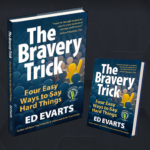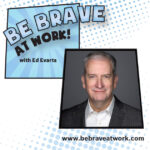
by Ed Evarts | Mar 30, 2017 | Participation, Visibility and Value
Ego and inner critic stories create what leadership coaches commonly call “limiting beliefs.” A limiting belief is a story that you tell yourself, whether true or false, that does not help you. Regardless of whether the stories that you tell yourself are coming...

by Ed Evarts | Mar 20, 2017 | Participation, Visibility and Value
How can you easily identify a story that you are telling yourself? You know you are about to create a story if you find yourself starting a sentence with one of the following: · “I think…” · “My guess would be…” · “Sounds to me like …” · “It seems to...

by Ed Evarts | Mar 4, 2017 | Relationships, Visibility and Value
Many of my clients are faced with challenging decisions every day and the first place they jump to is making the decision. Many of them do not take the extra step of first figuring out “how to decide.” Let’s say you are going to buy a car. Do you...









